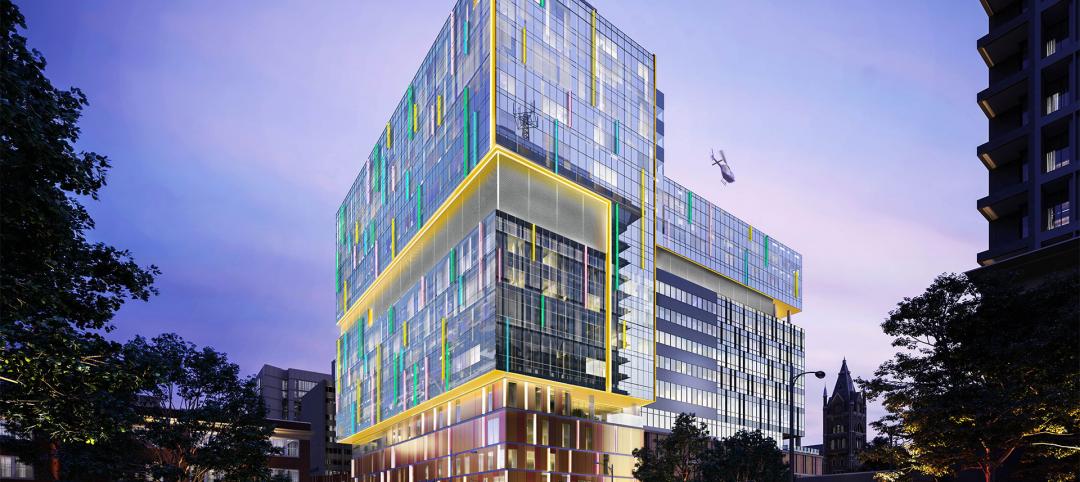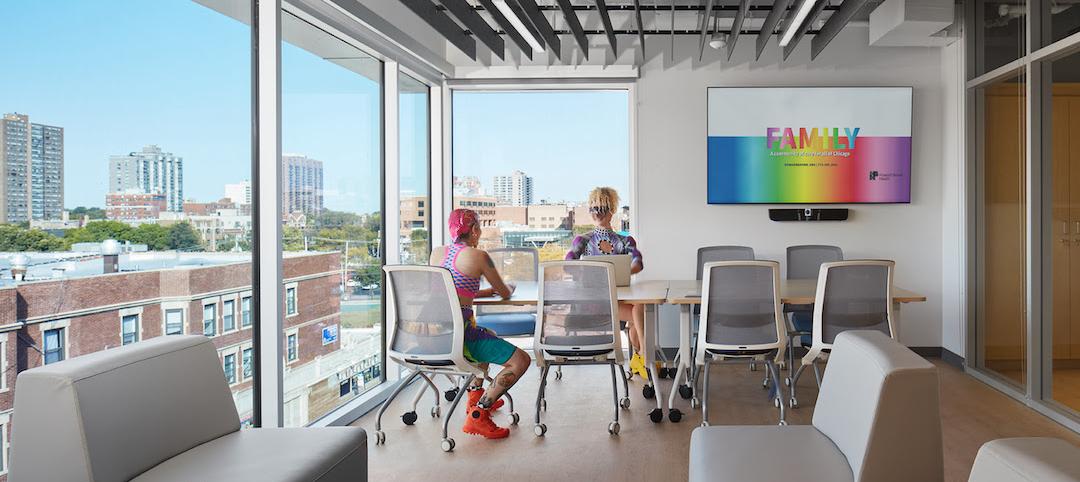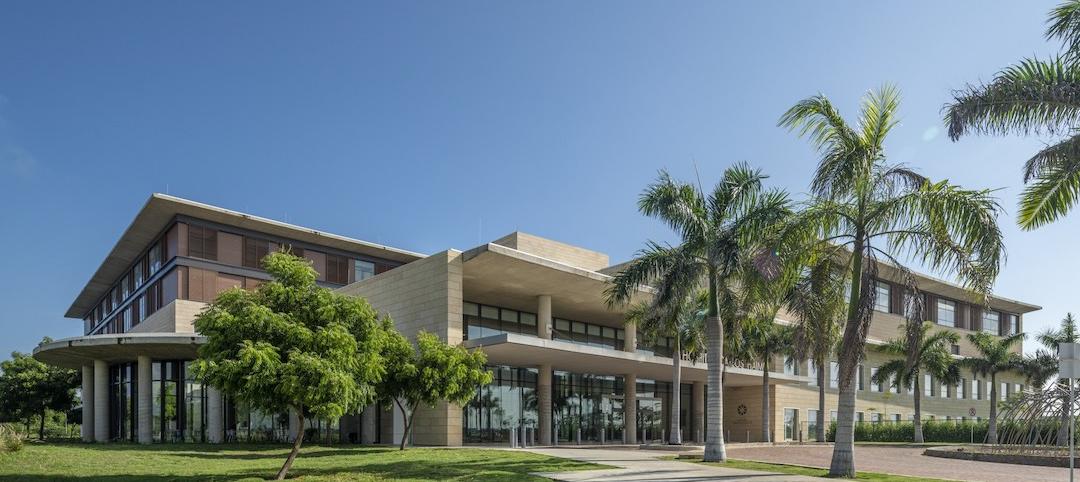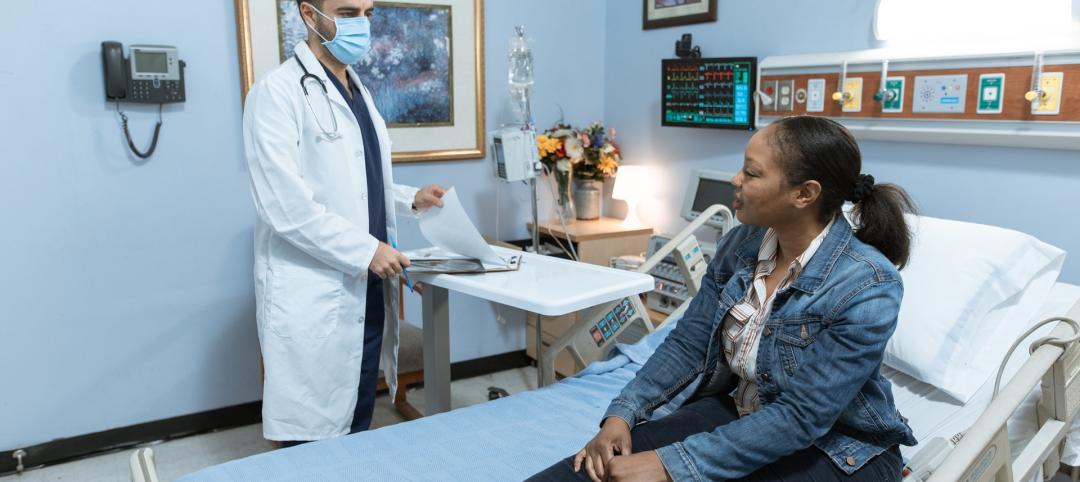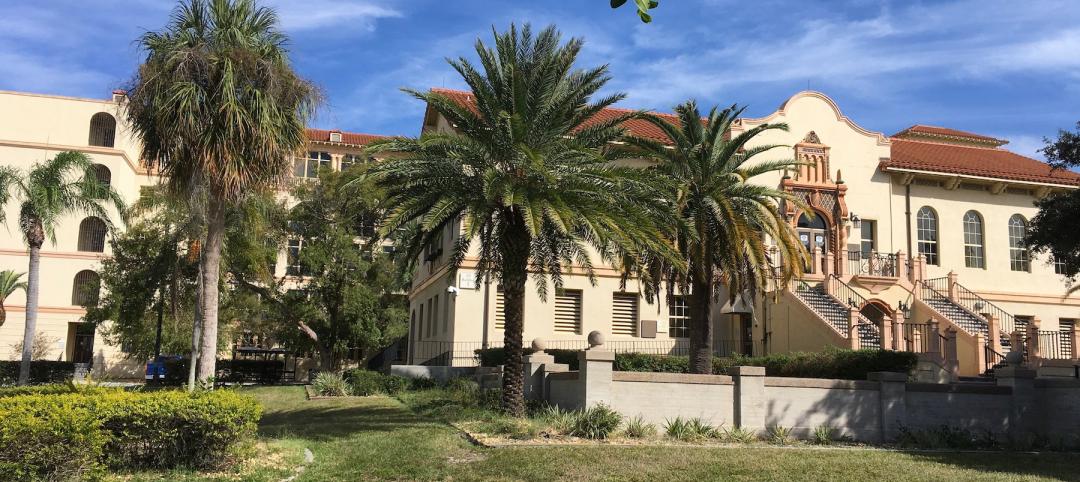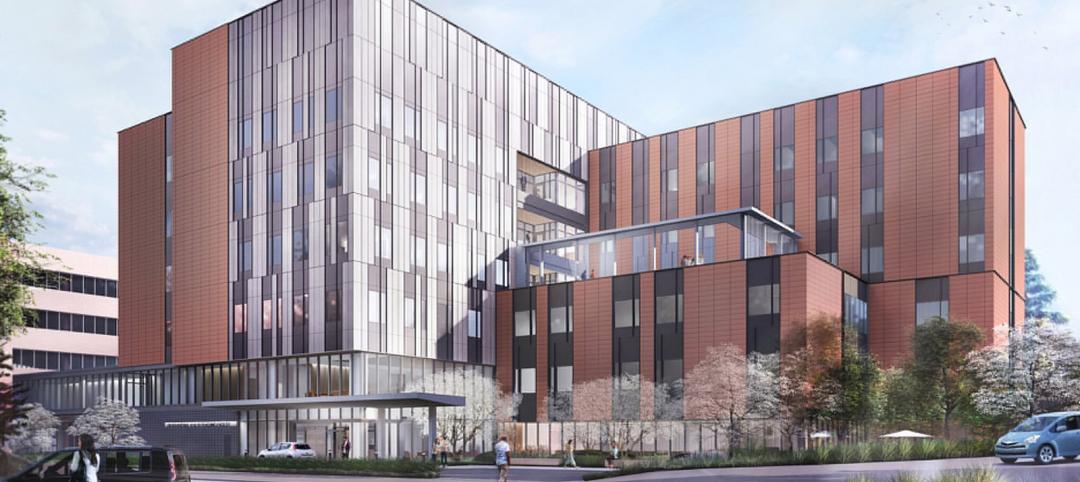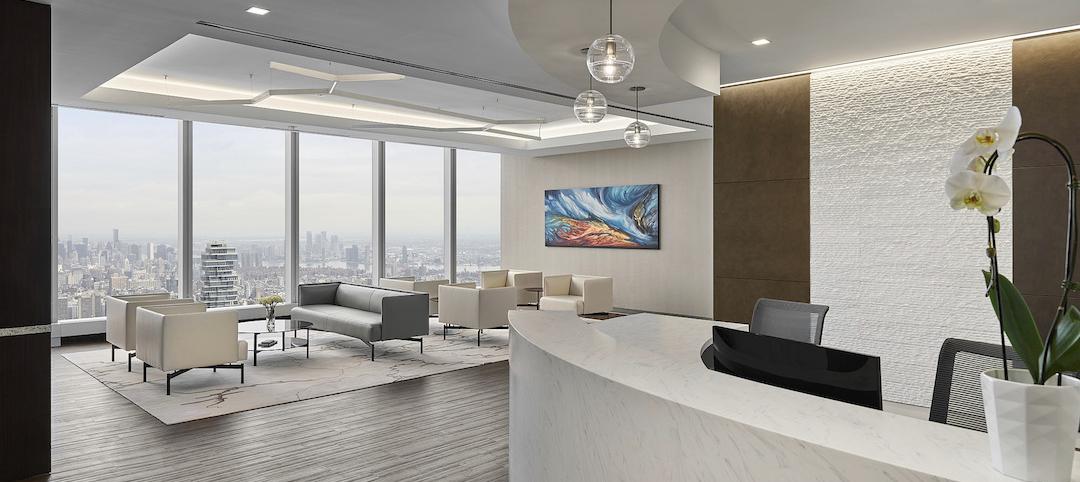On November 29, Summit Medical Group MD Anderson Cancer Center opened a 6,115-sf radiation oncology department within its campus in Berkeley Heights, N.J. This treatment center—half new construction, half renovation of a building that had been used for family services—is “important for Summit in terms of expanding its comprehensive treatment program,” says David Fernandez, Vice President of Oncology Services for Summit Health Management.
The building is also a “benchmark,” he says, in Summit’s broader relationship with Houston-based University of Texas MD Anderson Cancer Center, one of the largest cancer treatment networks in the country.
A significant trend in cancer care finds large healthcare systems branching out by affiliating with regional hospitals and medical centers to open jointly named satellite departments and clinics in suburban and even exurban markets.
“Healthcare systems are absolutely looking at cancer care as a business from an expansion standpoint, because they don’t want to lose their patient base” to a more conveniently located competitor, says John Alsentzer, Project Manager in the Nashville, Tenn., office of Smith Seckman Reid, which has been getting “quite a few RFPs for cancer centers” lately.
Satellites are driven by the needs of the outpatient community primarily, explains Andrew Quirk, Senior Vice President and National Director for Skanska USA in Nashville. “Even Memorial Sloan Kettering is making a huge effort to capture that marketplace.”
Quirk points, by way of example, to the 207,000-sf McKinley Outpatient Treatment facility, a $68 million Skanska project that opened last fall about a mile from H. Lee Moffitt Cancer Center’s campus in Tampa, Fla. “Moffitt saw the need to get out into the marketplace,” says Quirk. And by consolidating its outpatient services into one six-story building, Moffitt freed up space to expand its main hospital on the University of South Florida campus.
This outpatient center’s services include phlebotomy, transfusion, screening and diagnostic mammography, MRI, bone-density testing, surgery, a pharmacy, and genetic risk assessment.
Los Angeles-based Cedars-Sinai Hospital is improving a previously unoccupied new building in the L.A. suburb of Tarzana to a three-floor, 30,000-sf cancer center that, when it opens later this year, will include doctors offices, four pods with double-sided exam rooms, an infusion room with 30 chairs, a pharmacy, labs, and lounges.
Doss Mabe, a Partner with ZGF, the architect on this project, says Cedars-Sinai has several build-to-suit or tenant-improvement satellite cancer centers either opened or in the works around L.A. He describes these as the “front door” to the healthcare system’s cancer care.
“It’s a very different design proposition” from larger cancer centers, says Mabe. Patients often view a neighborhood facility as they would a spa. Satellites are also designed for quicker construction, as speed to market is an important competitive criterion, he says. Cedars-Sinai is also hedging its bets by leasing the Tarzana property for only 10 years.
E.W. Howell Construction was recently awarded the Southampton Hospital-Phillips Family Cancer Center, the first of its kind to be located on the east end of Long Island, N.Y. The two-story, 12,000-sf building is designed like a traditional barn that is commonly found in this market.
“Southampton wanted to bring this closer to its patients, so they won’t have to travel so far,” says Robert Timperio, Vice President and head of E.W. Howell’s healthcare division. The cancer center will include a LINAC and CT/simulation room, radiation oncology, four exam rooms on the first floor and three on the second, an infusion room with 14 chairs, conference rooms, and office space.
Timperio says Southampton Hospital is opening this satellite at a time when a number of Manhattan-based healthcare systems are coming to Long Island with outpatient centers.
The cancer center as a “franchise”
HDR did MD Anderson’s master plan, and Jon Crane, a Senior Vice President in the AE firm’s Atlanta office, reveals that the hospital’s growth strategy includes opening regional cancer centers domestically and internationally that range from 100,000 to 200,000 sf, and can handle a host of treatments.
Summit is currently collaborating with MD Anderson on a 130,000-sf outpatient facility under construction in Florham Park, N.J., that’s scheduled to open later this year. Its multidisciplinary menu of services will include radiation oncology, medical oncology, gynecological oncology, infusion, diagnostic imaging, mammography, and plastic surgery. Florham Park will also have a resource center that is accessible to patients and staff, and connects both to MD Anderson.
When asked why it chose to partner with MD Anderson, Summit’s Fernandez says the arrangement “is more like a franchise,” with specific design and programming criteria. He also says the partnership accentuates Summit’s commitment to support a consistently high level of service. “And, as we grow, they grow,” he says.
Molly Gabel, MD, Summit’s Medical Director of Radiology Services, was brought on board to help Summit set up its radiation oncology practice. She was instrumental in the design of the Berkeley Heights radiation oncology facility, which Summit submitted to MD Anderson for approval. The building took 18 months to complete.
Walking the new facility with a BD+C reporter, Gabel singles out little details, like the light-wood flooring and a closet in the hallway near the reception area, as examples of “softer” design touches that help put patients at ease.
The department is designed in a circle so that every patient passes a long nurses’ station before entering one of its three exam rooms or its treatment room. The department’s LINAC vault—one of the few in the country to combine a PET/CT scanner and High Dose Radiation machine in one room—is made somewhat less imposing by a backlit mural in the ceiling and an adjacent small outdoor garden area.
“Cancer care is a moving target, with discoveries being made all the time,” says Joseph Saphire, AIA, Partner, Saphire + Albarran Architecture, this project’s architect. “But the most important thing is still the patient experience and treating them with a great deal of respect, so they don’t feel like they’re being herded into a pen.”
The Berkeley Heights facility, with a 16-person staff, is currently handling 30-35 patients per day, with 60 being its capacity, says Fernandez.
Related Stories
Healthcare Facilities | Dec 15, 2021
COVID-19 has altered the speed and design of healthcare projects, perhaps irrevocably
Healthcare clients want their projects up and running quicker, a task made more complicated by the shortage of skilled labor in many markets.
Healthcare Facilities | Dec 15, 2021
MEP design considerations for rural hospitals
Rural hospitals present unique opportunities and challenges for healthcare facility operators. Oftentimes, the infrastructure and building systems have not been updated for years and require significant improvements in order to meet today’s modern medical demands. Additionally, as these smaller, more remote hospitals are acquired by larger regional and national healthcare systems, the first step by new ownership is often to update and rehabilitate the building. But how can this be done thoughtfully, economically, and efficiently in ways that allow the engineering and facility staff to adapt to the changes? And how can the updates accurately reflect the specific needs of rural communities and the afflictions with which these areas most commonly face?
Healthcare Facilities | Dec 7, 2021
Wheeler Kearns Architects completes Howard Brown Health’s Broadway Youth Center in Chicago
The new facility will provide medical and social service programs to LGBTQI+ youth.
Healthcare Facilities | Nov 23, 2021
Why vertical hospitals might be the next frontier in healthcare design
In this article, we’ll explore the opportunities and challenges of high-rise hospital design, as well as the main ideas and themes we considered when designing the new medical facility for the heart of London.
Healthcare Facilities | Nov 12, 2021
Centro Hospitalario Serena Del Mar is Safdie Architects’ first project in Latin America
The hospital project is characterized by its connectivity to nature.
Healthcare Facilities | Nov 2, 2021
Key design considerations for designing the smart patient room
The complete patient experience encompasses the journey to the hospital, the care experience, and the trip back home. All these touchpoints come with an expectation.
Cladding and Facade Systems | Oct 26, 2021
14 projects recognized by DOE for high-performance building envelope design
The inaugural class of DOE’s Better Buildings Building Envelope Campaign includes a medical office building that uses hybrid vacuum-insulated glass and a net-zero concrete-and-timber community center.
Healthcare Facilities | Oct 22, 2021
The VA is updating what once was the main hospital on a Florida medical campus
The renovated Building One will provide outpatient services.
Healthcare Facilities | Oct 21, 2021
UW Medical Center starts construction on Behavioral Health Teaching Facility
Will add much-needed patient bed capacity for Seattle.
Healthcare Facilities | Oct 20, 2021
Ware Malcomb completes Princeton Longevity Center at 1 World Trade Center
The project is located on the 71st floor.



